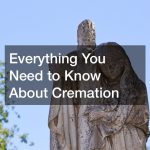

An end-of-life documents checklist is essential for caregivers to guide their loved ones when they depart. Death is something we cannot all avoid, and as the old man says, ‘ death is the only thing that equalizes human beings.’ When, as a person, you notice that your loved one has days to live, you can advise them on the end-of-life- documents checklist they should have to prepare for death. Most of these documents guide those left behind regarding the properties.
Discussing death might be difficult at first, but it is good to be at ease and protect the people you love. If you plan to disclose your wishes to people close to your heart, here are a few steps you can consider and make the discussion easy on your end-of-life wishes.
Make a complete engagement -make sure that you maintain direct eye contact and remain firm as you talk to them.
State facts-Make the conversation on a high level and state facts where you need to. Talk as if you are talking about a common disease.
Could you encourage them to respect your wishes? Insist that you expect them to honor your wishes.
Ensure your understanding: It is to ensure that you know what you want. Explain to your people that you are okay and understand what you are saying. Also, it would be best if you told your loved ones that you gave deep thought about everything.
Give them time after discussing your wishes. It is good to give them time to digest everything. It is hard to come to terms that they might lose you soon.
If you are a caregiver and you have been wondering what documents one needs, here is a guide for you on the end-of-life document checklist.
Why is it Important to Have an End-of-Life Documents Checklist?
Having the end-of-life documents checklist guides you on the things you need to secure the future of those you left behind. Planning your end of life helps make crucial decisions on property, finances, and healthcare. When you have your documents in order, you remove the burden on your loved ones who might live to have unending battles with relatives or the administrator.
When you plan your end-of-life documents checklist as a caregiver, it is one of the best gifts you can leave behind. They will not have to struggle since everything will be in place with supporting documentation.
By the time we face death, we don’t have enough time to express what we want. So that is why it is vital to plan earlier before we get to a stage where you can do nothing. When you discuss your wishes with your doctors, Medicaid lawyer, or family members, it will honor your wishes when you are long gone.
Below is a comprehensive guide to the end-of-life documents checklist for caregivers.
Last Will and Testament
You write those you want to manage or inherit your properties like cars, buildings, and more in your will. If you have many children, you give them shares according to your choice. Those will be the beneficiaries of your properties.
When you draft a Will, it will ensure that you will leave your assets to people who you want and not who want the assets. If your children are underage, you can write the caregiver’s name to manage your properties.
There are so many ways you can write a Will, and if not sure, you can consult with your lawyers on the same.
In your last Will, you will need to include the following:
An executor-this is the person who will help to ensure that your wishes are honored as you had wishes
A beneficiary – is the person or people who will inherit your properties and assets.
Personal properties – These are the assets your beneficiary will take.
Debt and expenses – You will have to describe how and who will manage your debts and finances.
Special instructions – It is also wise to state clear instructions on what you want to do, like care of pets and more.
Power of the Attorney General
The power of attorney general is another important thing you should include in your end-of-life documents checklist. The document allows another person to act on your behalf if you are not in a place to do it because of old age or sickness on matters of legal, personal, financial, and business people.
There are different degrees of power that only an old or sick person can determine who should get granted on their behalf.
Below are four types of power of attorney.
General power of attorney
The general power of attorney grants the selected person to pay a bill, do transactions, or pay tax service on behalf of an old or disabled person. However, POA terminates it once the person passes on.
A durable power of attorney for health care
POA is a legal document that allows you to get someone to make a crucial decision on your healthcare when you are in a state where you cannot do it yourself. It is also known as a health care proxy. However, the person you select to help you with this cannot access your finances. He will deal only with matters of health. The document is different from the power of attorney financial document.
The agent of your health care you appoint is the one who gives authorization to medical personnel in case of an emergency procedure.
Limited power of the attorney
This type of power is available for a particular reason. You can represent or act on behalf of an older person on one specific day or time.
Life Insurance Plan

If you have not yet secured life insurance as a caregiver, you need to consider it. Life insurance will help protect people who rely on you financially in case of your demise. Life insurance can cover daily and long-term finances for your loved ones.
Also, it can cover other expenses like your burial budget.
To decide on the plan, you want to consider your age and household needs. There are many reliable health insurance companies, so you can do your research online before settling for one. Also, if you are lucky, you can get an employer who pays life insurance as a benefit. They can do it for free or deduct it from your salary.
If you are not sure, you can look for an insurance agent who can help you choose a life insurance plan that fits you.
Living Will
A living Will should never be missing in the list of end-of-life documents checklist. Most people think that living Will and last Will are the same things, but these are two different things. A living will help to write down your healthcare preference if you are in a state where you cannot communicate with yourself. Here you can list your wishes concerning the types of treatment you want, medications, and other products. Also, you can list things that you don’t want.
This type of will matches with the POA one. The details in both documents should be the same. When the two are combined, they can also be named AHCD. Getting an AHCD will help your loved ones with insights when you are in a position not to talk.
Home owner Insurance
Homeowner insurance is something that should not miss in your end-of-life documents checklist.
Securing a home insurance license will help protect the future of those you leave behind. You will protect them from losing the house and also its administration. In your home insurance, you should select the beneficiaries after your home. After your demise, they can live in your home comfortably.
Home owner insurance also helps to protect your assets in the homestead. Also, it covers medical bills for any person injured in your residence. To get good homeowner insurance, you can ask real estate agents to advise you on companies they have worked with in the same way.
Determine the End-of-Life Housing
Determining end-of-life housing is another vital thing included in the end-of-life documents checklist. If you reach a point when you feel you need an end, a few hacks can help you determine what you want. The end-of-life housing plan should not be missing in your end-of-life documents checklist. The first factor is to consider what type of housing matches your needs. You can choose to go to a facility with family care doctors who will look after you if critically ill.
If you think a nursing home is where you will fit, it is good to first visit a facility and see if it meets your expectations from food, care, nurses, and medics. Also, you can settle for home care. However, it will be a different experience than moving to the facility. If you get unwell, you will need to hire a caregiver and keep in touch with a telehealth doctor. You should ensure that you get the right caregiver because this is the person you might entirely depend on in some cases.
Deciding your Burial and Funeral Arrangements.

Your end-of-life documents checklist should not miss how you want your burial and funeral to go. It is also one of the biggest favors you can do to your loved ones, especially during that grieving period. It will also help them honor your wishes, and also making decisions at that time might be tricky, so if you leave behind how you want it to be, it will ease their work.
You should think about your religious beliefs and final wishes and the style you wish your loved ones to bid goodbye using.
Here are some of the funeral types you can use when making your Will
Traditional service – This is where your funeral can be conducted in a church or home entirely.
Viewing and visitation – involve where your casket gets opened during a certain visiting period.
Scattering of ashes ceremony – There, you can request your loved one to cremate you once you die. After the cremation process, your friends and family members will scatter your ashes in places you love. You can also highlight the unique areas you wish it to get thrown at.
Celebration of life – In these sessions, your friends give tributes to you as they celebrate the moments you spent together.
Create an Obituary and Death Notice
Nowadays, most people write their obituaries. Also, you should include it in the end-of-life documents checklist. You don’t necessarily have to register for yourself. You can discuss critical things that you want to include in your obituary.
But if you write it on your own, it might be more accessible work for your loved ones. Deciding what to do might be challenging, especially when they are mourning.
List your Assets

Assets are properties that you fully own and that beneficiaries will inherit. The list of assets may vary and depend on what you accumulated when you were alive. Listing your assets should not be missed in the end-of-life document checklist. They will show where your properties are and the amount. Some of the assets may include:
- Savings
- Cash
- Lands
- Pension or retirement land
- Tax services
- Stocks or bonds
Bottom Line
After completing your end-of-life documents checklist requirements, you can store your documents in a safe place, talk about your wishes to your loved ones, and keep updating your records with additional needs.
Also, you can meet with a lawyer. If you have disabilities, you can look for a disability lawyer and discuss or ask questions about legal documents.
Equipping yourself with the end-of-life checklist is something that can help you plan how you want things to be when you finally leave this world. Also, you will leave your loved ones in a peaceful life where they don’t have to indulge in fights with relatives over your property.

